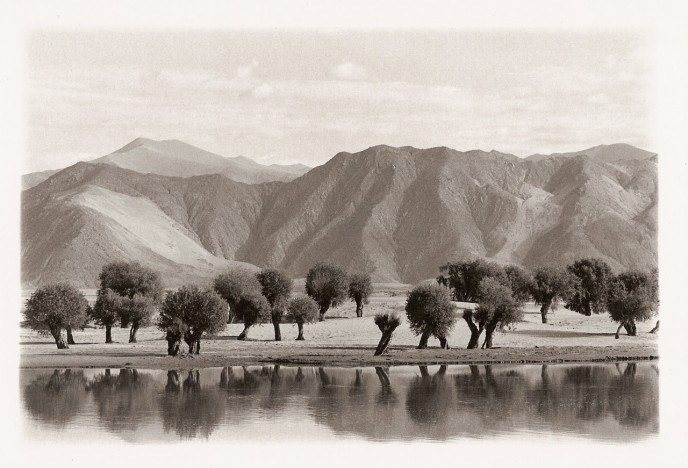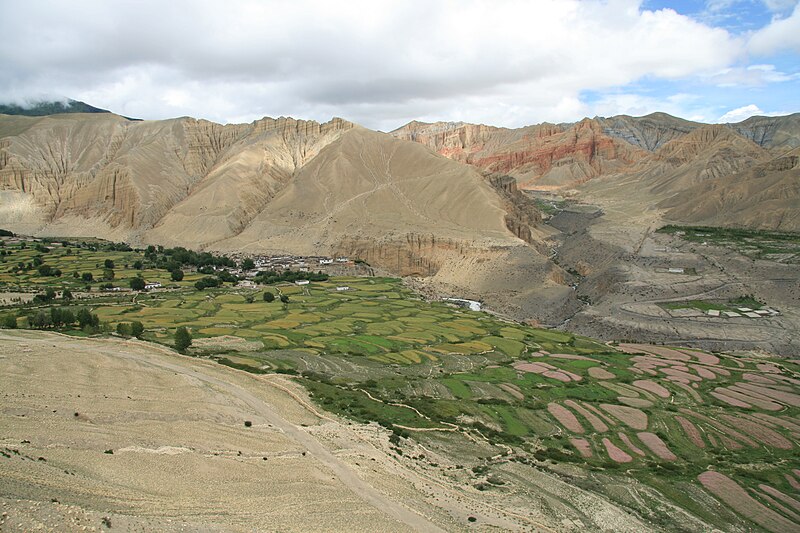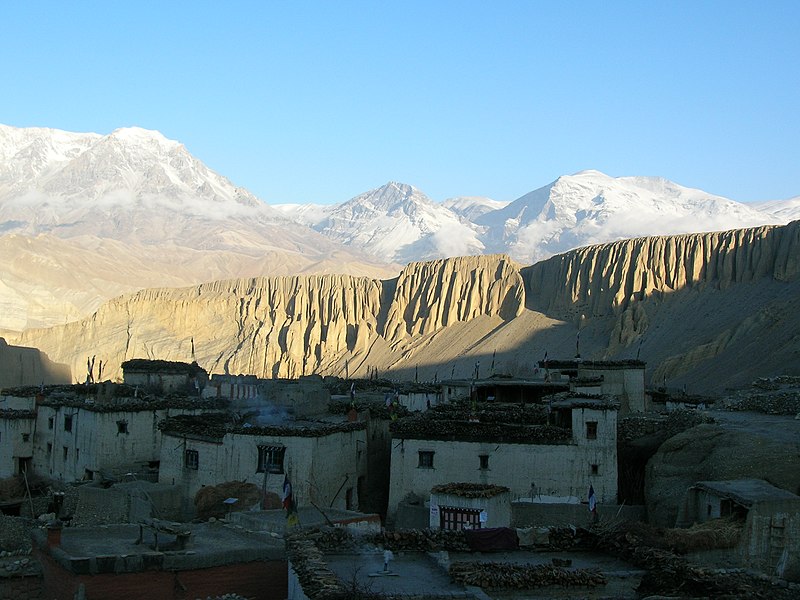
Its odd trees, tilted brushy against barren hills, drew me in. As if the lunar landscape sprouted some symbol of arid California, all over the vistas of my childhood. While the valley's water lent the scene a watershed-adjacent air my desert encounter--I got lost on the way between the campsite and the ride home, in predictable heat and thirst--lacked, it enchanted me. It looked like an engraving from a Victorian ethnologist from the burnished reign of some Raj. I kept the postcard safe for years as it appeared to me as if a dream to be fulfilled. Despite the title, mun tan, Tibetan for "fertile plain," much of Lo/ Mustang appears differently than advertised, or as it is shown in this shot from Ghemi:

Seeing these photos of Tetang...

and the capital, Lo Mantang...
 ...reminds me also of visions as if glimpsed by Coleridge, Calvino, or Borges, of impossible cities beyond our comprehension. One impossibility is assuming such places will stay this way. When the Maoists overthrew the kingdom of Nepal in 2008, so went the last king of Mustang. As the new regime courts the Chinese, tourism and modernization will follow as inevitably as Kathmandu's made filthy by Israeli and German trekkers and Lhasa by military-owned brothels, neon, Holiday Inn, and every manner of cynical exploitation. Such realms contract and dry up, pressed between China and India, and a Nepalese effort to supplant Buddhist fastnesses with Hindu-dominated enclaves where monasteries may turn more museums.
...reminds me also of visions as if glimpsed by Coleridge, Calvino, or Borges, of impossible cities beyond our comprehension. One impossibility is assuming such places will stay this way. When the Maoists overthrew the kingdom of Nepal in 2008, so went the last king of Mustang. As the new regime courts the Chinese, tourism and modernization will follow as inevitably as Kathmandu's made filthy by Israeli and German trekkers and Lhasa by military-owned brothels, neon, Holiday Inn, and every manner of cynical exploitation. Such realms contract and dry up, pressed between China and India, and a Nepalese effort to supplant Buddhist fastnesses with Hindu-dominated enclaves where monasteries may turn more museums. As with Bhutan, which just raised its $200 per diem rate to $250, at least Mustang requires visitors to pay $50 a day. Yet, according to the Wikipedia entry, the locals have resisted the visits as of 2010 as none of that fee goes back to them. So much for Marxist reform of an unjust system for the peasants.
As you can tell from my Scouting, my ventures outdoors remain infrequent. For now, I mean to look up when I have more downtime what's been written by those who ventured to the little-known kingdom the past half-century. However dated, three library titles may open up this redoubt to curious eyes like mine. Peissel's 1967 bestselling "A Lost Tibetan Kingdom"; "The Last Forbidden Kingdom" by Clara Marullo in 1995; Peter Mathiessen's "East of Lo Monthang" the same year await.
Then it may be on to the tale of finding the mysterious source Peissel traced for Herodotus' "gold-digging ants" into the Himalayas, or his book on yet another "hidden kingdom" of Zanskar, in Kashmir near where the Baltis live, in the last places far from our relentless network, where few discoveries await today's adventurers, at least on the surface of our topographically diligent globe.






















No comments:
Post a Comment